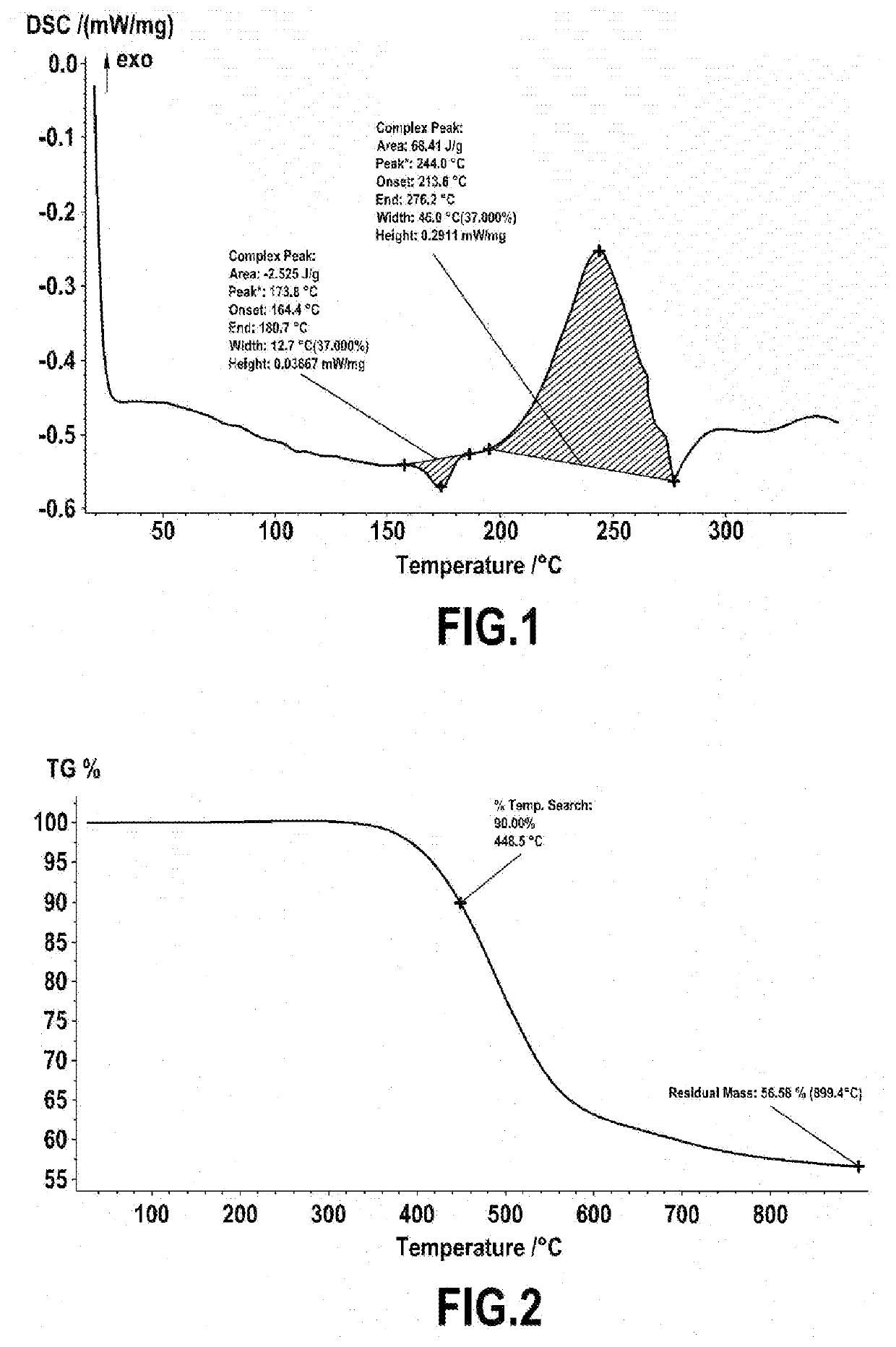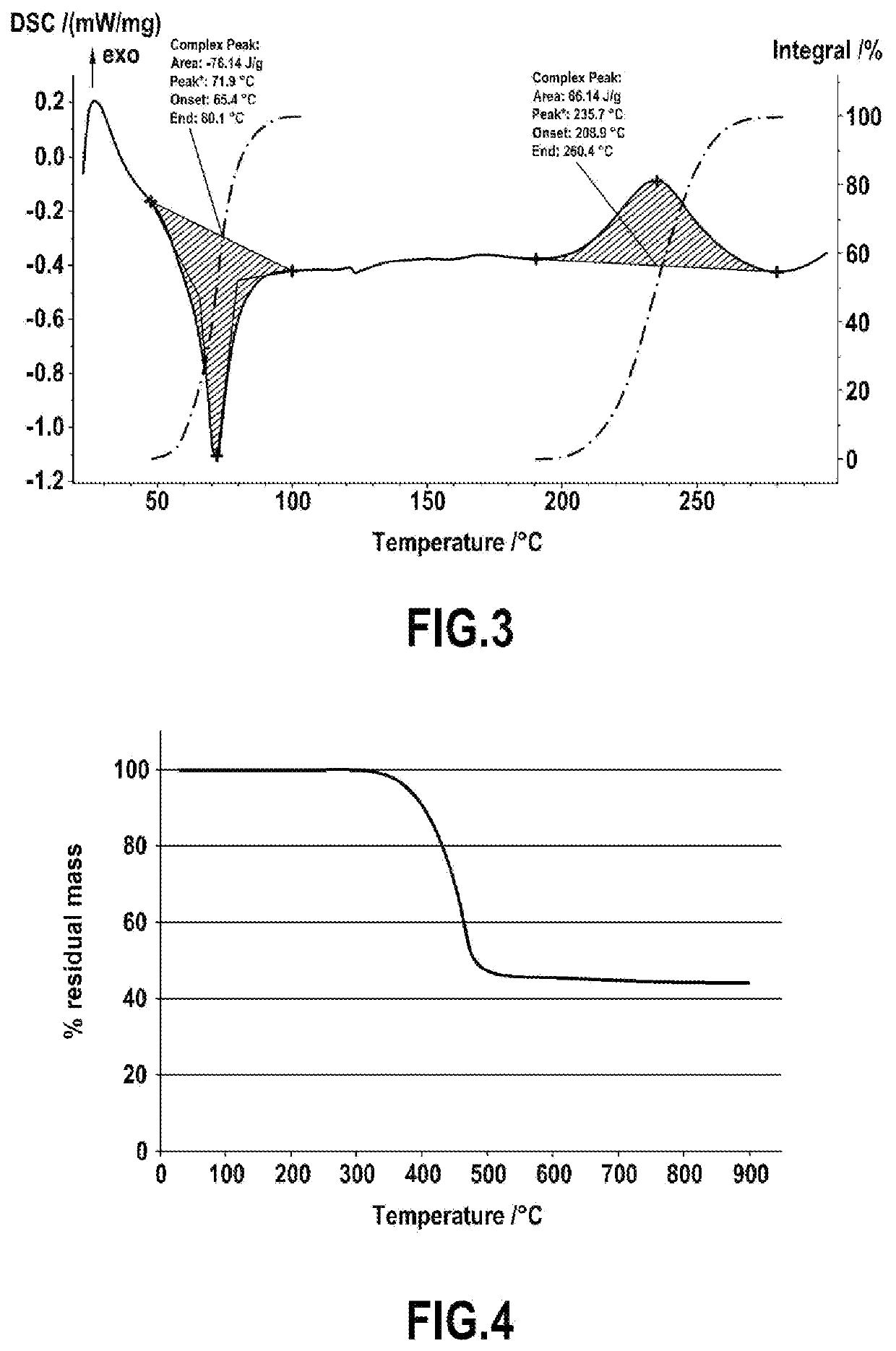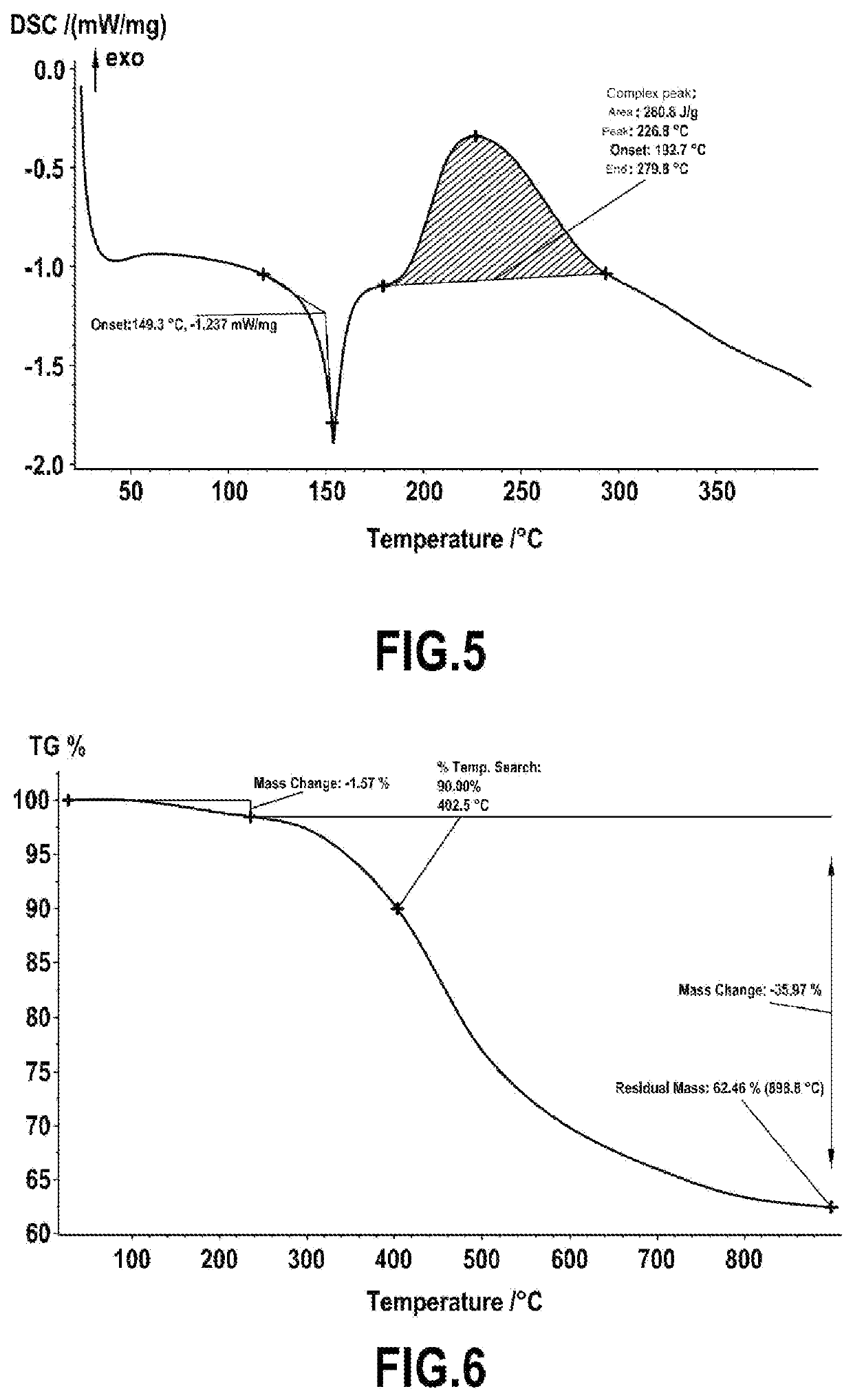Process for producing a polybenzoxazine monomer
a technology of polybenzoxazine and monomer, applied in the field of polybenzoxazine monomer manufacturing, can solve the problems of poor thermal stability, charring properties, and performance decline, and achieve the effect of increasing the charring ra
- Summary
- Abstract
- Description
- Claims
- Application Information
AI Technical Summary
Benefits of technology
Problems solved by technology
Method used
Image
Examples
example 1
of a Polybenzoxazine Monomer from Meta-Xylylene-Aminomethylphenol and Benzaldehyde and Subsequent Crosslinking
[0071]Meta-xylylenediamine is reacted with salicylaldehyde in stoichiometric proportions in methanol at reflux for 2 h to form the corresponding imine. The imine is reduced to the amine with 2 equivalents of NaBH4 added at 0° C. in a solution of the imine in ethanol, followed by heating at reflux for 2 hours. The meta-xylylene-aminomethylphenol thus synthesized is dissolved in toluene with 2 equivalents of benzaldehyde and then refluxed in a Dean-Stark apparatus to remove the water generated during condensation. After evaporation of the solvent under reduced pressure, the product obtained is a viscous liquid with an orange color when hot, and a pale yellow solid at room temperature. The product was characterized by NMR and the structure was confirmed.
[0072]Thermal characterization by DSC revealed an enthalpy of polymerization of 68 J / g. The DSC thermogram obtained is provide...
example 2
of a Polybenzoxazine Monomer from 1,10-Decanediaminomethylphenol and Benzaldehyde and Subsequent Crosslinking
[0073]1,10-Diaminodecane is reacted with salicylaldehyde in stoichiometric proportions in methanol at reflux for 2 h to form the corresponding imine. The imine is reduced to the amine with 2 equivalents of NaBH4 added at 0° C. in a solution of the imine in ethanol, followed by heating at reflux for 2 hours. The 1,10-decanediaminomethylphenol thus synthesized is dissolved in toluene with 2 equivalents of benzaldehyde and then refluxed in a Dean-Stark apparatus to remove the water generated during condensation. After evaporation of the solvent under reduced pressure, the product obtained is a viscous liquid with an orange color when hot, and a pale yellow solid at room temperature. The product was characterized by NMR and the structure was confirmed.
[0074]Thermal characterization by differential scanning calorimetry (DSC) revealed a melting temperature of 65° C. as well as an e...
example 3
a Mixture of a Polybenzoxazine Monomer Synthesized Polyamine with an Additional Polybenzoxazine Monomer Synthesized from a Polyaldehyde
[0075]An additional polybenzoxazine monomer was synthesized from a polyaldehyde in the following manner.
[0076]Furfurylamine is reacted with salicylaldehyde in stoichiometric proportions in methanol at reflux for 2 h to form the corresponding imine. The imine is reduced to the amine with 1 equivalent of NaBH4 added at 0° C. in a solution of the imine in MeOH, followed by heating at reflux for 2 h. The synthesized furfurylaminomethylphenol is dissolved in toluene with 0.5 equivalents of terephthalaldehyde and refluxed in a Dean-Stark apparatus to remove water generated during the condensation reaction. The reaction is stopped when the conversion of aldehydes has reached its maximum, monitored by proton NMR. After evaporation of the solvent under reduced pressure, the isolated bisbenzoxazine is an off-white solid. The product was characterized by NMR an...
PUM
| Property | Measurement | Unit |
|---|---|---|
| temperature | aaaaa | aaaaa |
| temperature | aaaaa | aaaaa |
| temperature | aaaaa | aaaaa |
Abstract
Description
Claims
Application Information
 Login to View More
Login to View More - R&D
- Intellectual Property
- Life Sciences
- Materials
- Tech Scout
- Unparalleled Data Quality
- Higher Quality Content
- 60% Fewer Hallucinations
Browse by: Latest US Patents, China's latest patents, Technical Efficacy Thesaurus, Application Domain, Technology Topic, Popular Technical Reports.
© 2025 PatSnap. All rights reserved.Legal|Privacy policy|Modern Slavery Act Transparency Statement|Sitemap|About US| Contact US: help@patsnap.com



